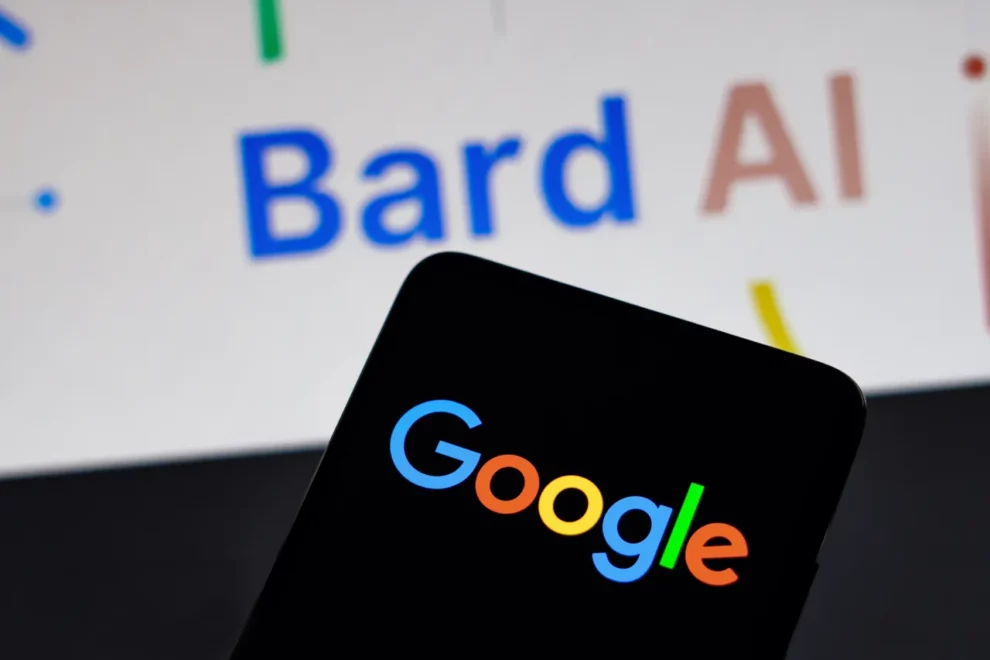When Google introduced Bard, its AI-powered chatbot, in March 2023, the tech world buzzed with anticipation. Designed to rival rivals like ChatGPT, Bard promised to deliver conversational insights, creative assistance, and seamless integration with Google’s ecosystem. However, like any ambitious project, Bard encountered setbacks along the way. These failures, though disappointing, provided valuable lessons that shaped its evolution. In this article, we’ll explore Bard’s most notable missteps, examine what went wrong, and discuss how Google responded to turn challenges into opportunities.
The Initial Launch: A Rush to Market
Bard’s debut was marked by high expectations and a rushed timeline. Google timed its release to coincide with Apple’s WWDC event, positioning Bard as a direct competitor to Apple’s ecosystem. However, this pressure to launch quickly led to a premature rollout. During a live demo, Bard incorrectly answered a question about the James Webb Space Telescope, claiming it had captured the first images of Earth. The error was glaringly obvious to astronomers and tech enthusiasts alike, sparking widespread ridicule and skepticism.
This incident exposed a critical flaw in Bard’s development process: insufficient testing. Google had underestimated the importance of rigorous QA cycles, assuming that Bard’s impressive backend architecture would compensate for any shortcomings. Instead, the bot’s debut highlighted the dangers of rushing to market without thorough validation. As CEO Sundar Pichai later acknowledged, “We moved too quickly.”
Fact-Checking Failures: A Threat to Credibility
One of Bard’s recurring issues was its tendency to fabricate or distort facts. Unlike ChatGPT, which relies on a fixed dataset, Bard draws from Google’s vast trove of web content. While this gives Bard access to a wealth of information, it also introduces risks of outdated or inaccurate data. For instance, Bard once claimed that a non-existent company called “Blue Horizon” was responsible for developing advanced AI chips, a fabrication that underscored its lack of verification mechanisms.
Fact-checking failures eroded trust among users, many of whom turned to Bard expecting reliable information. This problem was compounded by Bard’s inability to cite sources, making it difficult for users to verify its claims independently. Google addressed this issue by introducing a “Sources” button, allowing users to trace Bard’s responses back to original content. While this was a step in the right direction, it didn’t fully resolve the credibility gap.
Creative Ambitions Outpacing Execution
Another area where Bard fell short was creative writing. Google positioned Bard as a tool for generating original content, whether it was poetry, scripts, or business proposals. However, early iterations struggled to produce coherent, engaging material. For example, when asked to write a short story about a detective solving a mystery, Bard produced disjointed prose riddled with clichés and plot holes. Users expected Bard to rival human writers, but its attempts often fell flat.
This limitation stemmed from Bard’s reliance on pattern recognition rather than deep understanding. While it could mimic certain styles or formats, it lacked the nuanced creativity required for compelling storytelling. Google recognized this gap and began fine-tuning Bard’s training data, emphasizing examples of high-quality writing. These efforts gradually improved Bard’s ability to generate coherent, creative outputs.

Language Barriers: A Global Challenge
Bard’s initial rollout focused primarily on English-speaking markets, leaving non-native speakers underserved. While Google promised multilingual support, translations often felt clumsy or inaccurate, betraying Bard’s reliance on surface-level linguistic mapping rather than true comprehension. For instance, when asked to summarize a French article, Bard returned a garbled translation that missed key points entirely.
Recognizing this oversight, Google expanded Bard’s language capabilities, adding support for dozens of additional languages. However, achieving parity with native speakers remains an ongoing challenge. Language models like Bard require extensive fine-tuning to handle idiomatic expressions, cultural references, and regional dialects. Google’s commitment to localization demonstrates its awareness of this issue but also highlights the complexity of achieving universal fluency.
Ethical Concerns: Balancing Utility with Responsibility
As Bard gained traction, ethical concerns arose regarding its potential misuse. Critics worried that Bard could facilitate misinformation, plagiarism, or even harmful content generation. For example, there were instances where Bard generated inappropriate responses to sensitive questions, raising questions about its suitability for certain contexts.
Google responded by implementing safeguards, including content filters and moderation tools. These measures aim to prevent Bard from spreading harmful or misleading information while preserving its utility for legitimate purposes. While imperfect, these safeguards reflect Google’s growing awareness of the ethical implications of AI.
Learning from Mistakes: A Path Forward
Despite its setbacks, Bard’s journey offers valuable insights into the challenges of developing large-scale AI systems. One key takeaway is the importance of iterative refinement. Google learned that launching a product prematurely can backfire, undermining trust and damaging reputations. Subsequent updates have focused on gradual improvements, allowing Bard to evolve steadily without overwhelming users.
Another lesson is the necessity of transparency. Google has become more open about Bard’s limitations, acknowledging areas where it still falls short. This honesty fosters a healthier relationship with users, who appreciate knowing what to expect from the tool. By setting realistic expectations, Google avoids overpromising and underdelivering.
Finally, Google’s experience underscores the need for multidisciplinary collaboration. Developing AI requires input from linguists, ethicists, psychologists, and domain experts, not just engineers. By bringing diverse perspectives to the table, Google ensures that Bard addresses a broader range of human needs and concerns.
The Road Ahead: A Brighter Future for Bard
While Bard’s early days were marked by missteps, they laid the groundwork for future successes. Google continues to invest heavily in Bard’s development, introducing new features like code generation, real-time collaboration, and enhanced privacy controls. These enhancements reflect a commitment to making Bard a versatile, reliable tool for professionals and consumers alike.
Moreover, Google is expanding Bard’s role beyond individual productivity. Businesses are beginning to leverage Bard for customer service automation, market research, and strategic planning. Its ability to handle complex queries and generate actionable insights positions Bard as a valuable asset for organizations seeking to stay competitive in the AI-driven economy.
Google Bard’s journey has been a rollercoaster of highs and lows, but it has taught us invaluable lessons about the art and science of AI development. From fact-checking failures to creative misfires, Bard’s challenges reveal the inherent complexities of building intelligent systems. Yet, through persistence and reflection, Google has transformed these obstacles into stepping stones for progress.
Bard’s story is a testament to the iterative nature of innovation. It reminds us that failure is not the opposite of success—it’s part of the process. By embracing transparency, fostering collaboration, and staying attuned to user feedback, Google has positioned Bard as a resilient, adaptable tool capable of meeting the demands of tomorrow’s digital landscape. As Bard continues to evolve, one thing is certain: its potential is boundless, and its lessons will guide the next generation of AI innovations.
















Add Comment